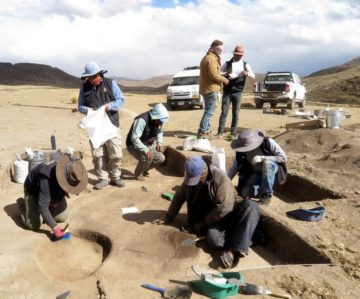Katrina Miller in The New York Times:
 It’s often viewed as a given: Men hunted, women gathered. After all, the anthropological reasoning went, men were naturally more aggressive, whereas the slower pace of gathering was ideal for women, who were mainly focused on caretaking. “It’s not something I questioned,” said Sophia Chilczuk, a recent graduate of Seattle Pacific University, where she studied applied human biology. “And I think the majority of the public has that assumption.”
It’s often viewed as a given: Men hunted, women gathered. After all, the anthropological reasoning went, men were naturally more aggressive, whereas the slower pace of gathering was ideal for women, who were mainly focused on caretaking. “It’s not something I questioned,” said Sophia Chilczuk, a recent graduate of Seattle Pacific University, where she studied applied human biology. “And I think the majority of the public has that assumption.”
At times, the notion has proved stronger than the evidence at hand. In 1963, archaeologists in Colorado unearthed the nearly 10,000-year-old remains of a woman who had been buried with a projectile point. They concluded that the tool had been used not for killing game but, unconventionally, as a scraping knife.
But the male-centric narrative has been slowly changing. On the first day of a college anthropology course, Ms. Chilczuk and her classmates listened to a podcast about the landmark discovery of a female hunter during an excavation in Peru in 2018. Among fragments of cranium, teeth and leg bones, archaeologists found a hunting kit with more tools — projectile points, flakes, scrapers, choppers and burnishing stones — than they had ever seen. This discovery led the team to review the findings from other burials in the early Americas; in 2020 they concluded that big game hunting between 14,000 and 8,000 years ago was gender-neutral.
More here.
